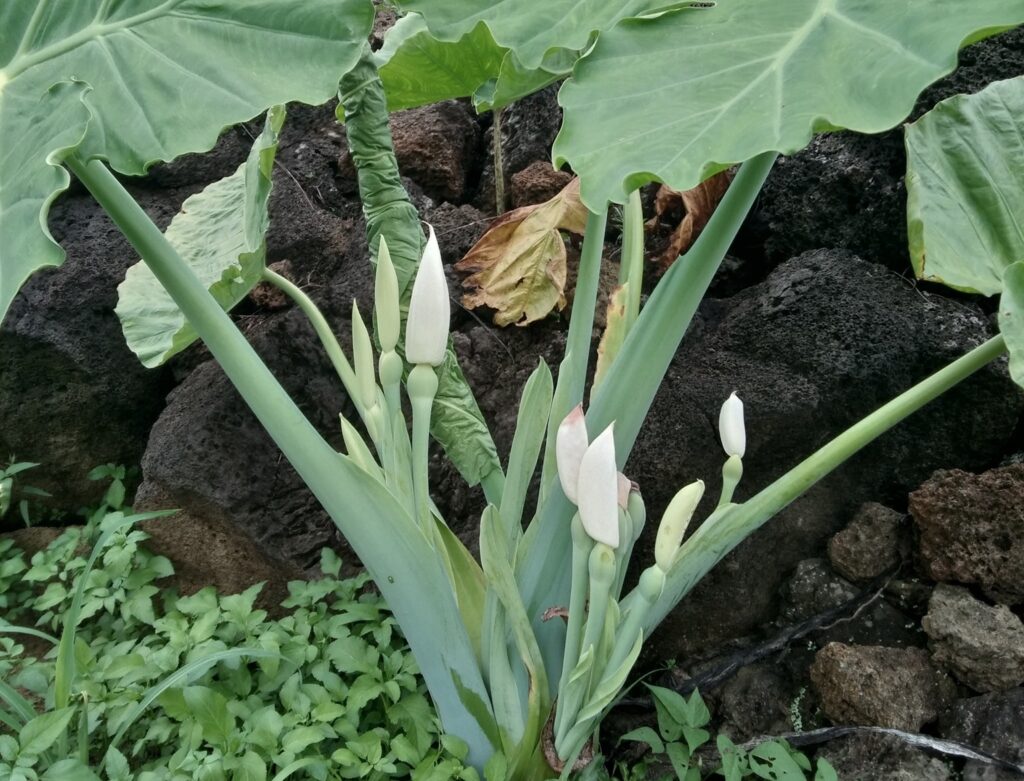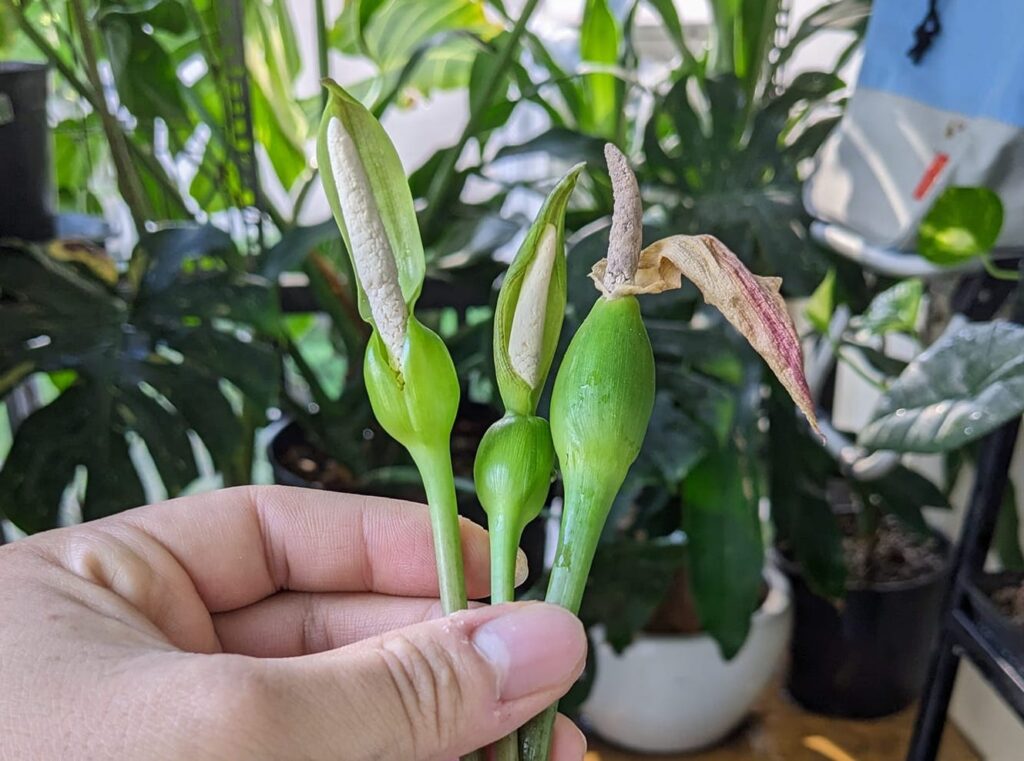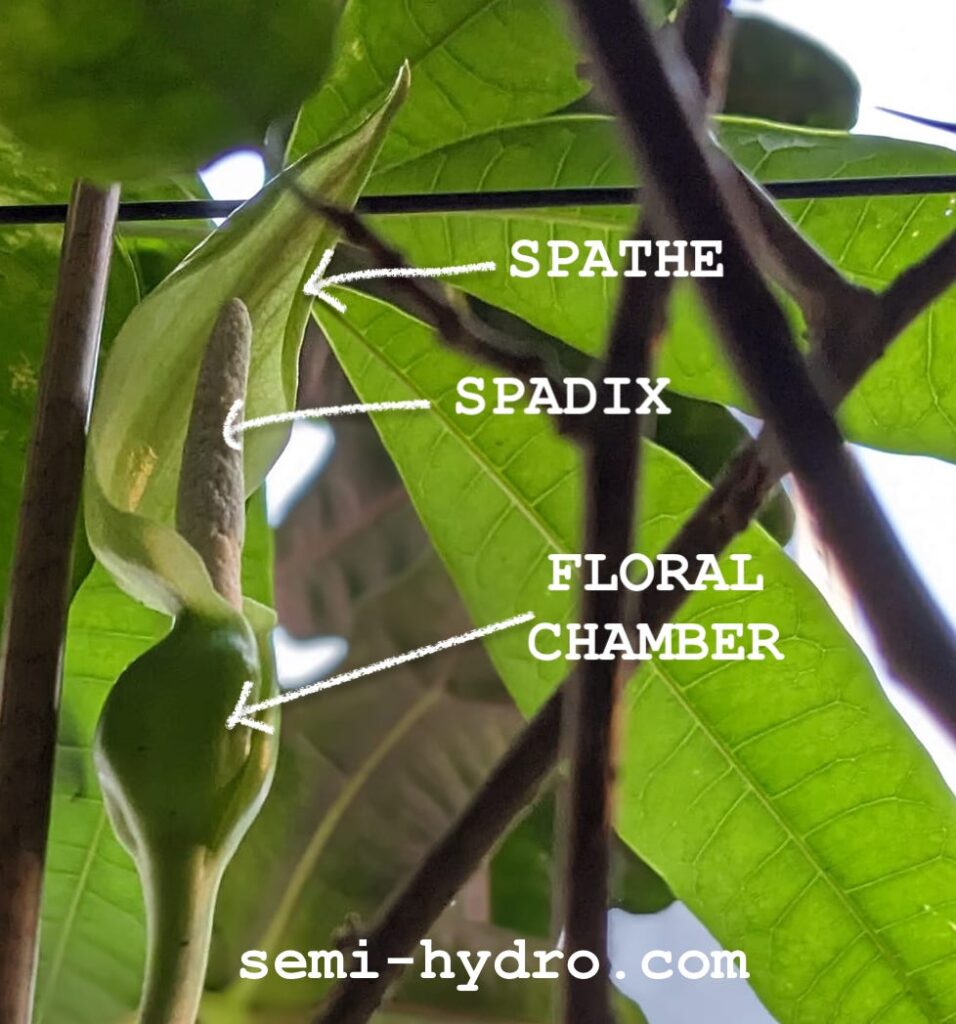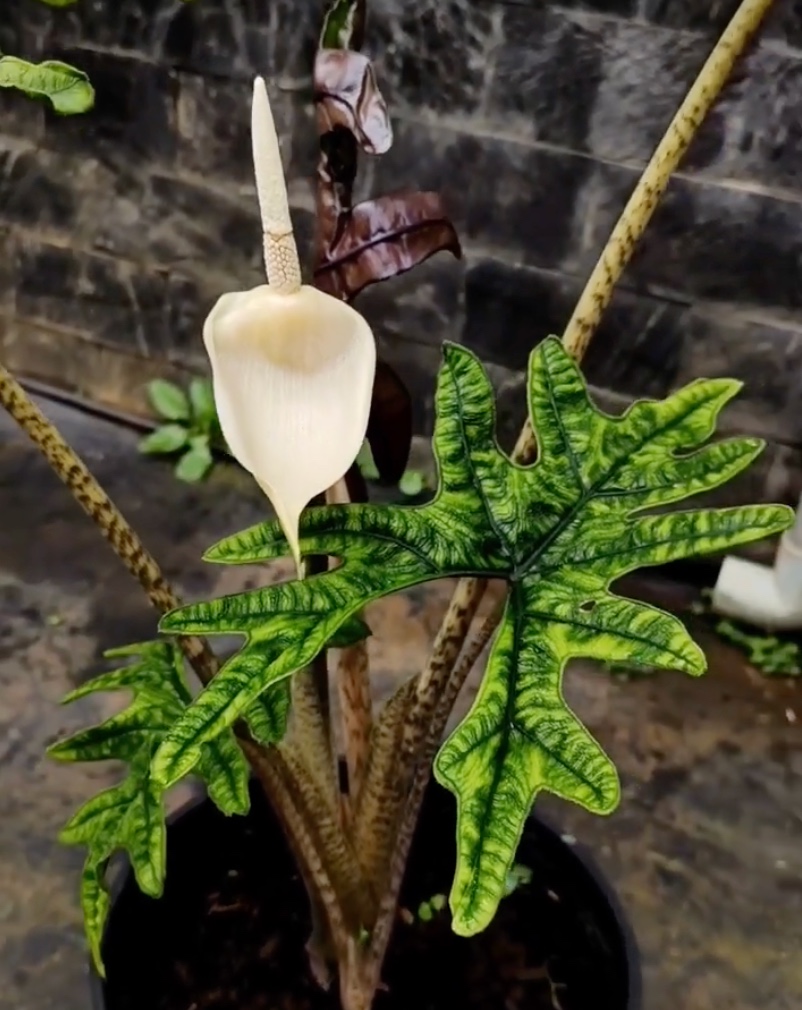Ever wondered about Alocasia flowers and what their appearance signifies? These plants don’t exactly have traditional flowers, but something called an inflorescence.
I’m here to demystify this for you in this easy-to-understand post.
Let’s dive into the world of Alocasia flowers and answer the most common queries people have about these fascinating plants.

Everything you want to know about Alocasia Flowers
What does the Alocasia Flower look like?
The Alocasia flower you see is not a typical flower but an inflorescence. This trait is shared by all members of the aroid (Araceae) family, and Alocasias are no exception.
Take a look at the picture we’ve provided.
The slender structure in the center is known as the spadix, and the broader, green part behind it is the spathe, a modified leaf. Beneath these two is a larger area called the floral chamber.
In Alocasia plants, the minuscule female flowers are tucked away inside the floral chamber, while the male flowers sit atop the spadix. So, while it’s common to refer to the combined spadix and spathe as a flower, the correct term is inflorescence.
The inflorescence’s color, size, and shape can vary among Alocasia species, but they generally have a similar look.
Understanding this unique floral structure is crucial, especially if you’re interested in experimenting with Alocasia pollination.
Can In-door Alocasias have flowers?
Yes, In-door Alocasias absolutely have flowers.
You might have read elsewhere that it’s rare for Alocasia plants to flower indoors, but that’s not quite accurate. The term ‘rare’ is often overused in plant discussions, and it doesn’t really apply to indoor Alocasias.
In fact, these plants are quite willing to bloom indoors, especially if you plant them in LECA or Pon. It’s not uncommon at all. I’ve personally seen numerous Alocasias flowers inside, and many of my friends have their Alocasia blooming, curious about what they are.
Alocasias tend to bloom when they’re either feeling great or under some stress. You can usually tell by the overall appearance of your plant which is the case.
Remember, just because your Alocasia is blooming, it doesn’t necessarily mean it’s in perfect health.
What should I do when my Alocasia is blooming?
When your Alocasia flowers, you have a couple of options:
- Just leave it be and appreciate it. Though they’re not the main attraction (we love Alocasias for their leaves, not their flowers), it can be a unique aspect of your plant to observe.
- Alternatively, you can cut off the entire inflorescence. This is an option if you prefer to focus the plant’s energy on leaf growth.
Should I keep the Alocasia Flower?
It’s generally best to cut off the Alocasia flowers as soon as you see them.
This is because the plant uses up energy to sustain these growths. Most of us prefer to have that energy channeled into producing lush, vibrant foliage instead.

It’s a simple matter of prioritizing what you want from your plant.
Plus, the Alocasia flower is not really “beautiful”, at least to me.
How to Prune an Alocasia Flower?
In the photo I’ve provided, you’ll see how to do it: get a pair of sharp, clean pruners and snip the inflorescence stalk as close to the base as possible.
Notice the various inflorescences I’ve removed, all from the same plant and at different growth stages.
At the very least, for cleanliness and plant health, remove the inflorescences after they’ve withered.
However, it’s best to cut them off as soon as you spot them. This helps prevent unnecessary energy expenditure and keeps your plant looking neat.



